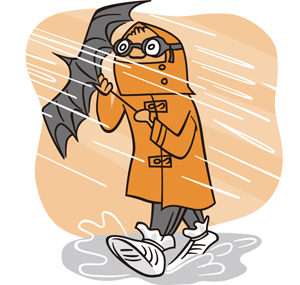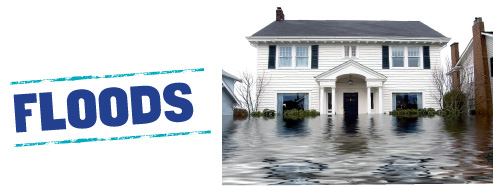Floating down a river can be very peaceful—unless that river is where your street used to be! A flood can happen anywhere, anytime, thanks to heavy rains, big storms, or surging ocean water. If you don’t own an ark, you’ll need to know how to outwit the waters and stay afloat.
In a Flash
Flash floods have two deadly features: they appear with little warning, and they are the fastest-moving kind of flood. Flash floods often happen when heavy rain falls in a short amount of time, or when water barriers, like a levee or a dam, break apart.
That Time of Year
Flooding along rivers is normal and even expected. Some river floods occur seasonally, particularly in the spring when winter snow melts and combines with spring showers. Monsoons are seasonal wind and rainstorms that mostly affect southern Asia and can cause floods each year.
FAST FACT
• Urban areas are not immune to flooding. When land is paved or cemented, it loses its ability to absorb water. When too much rain collects, roads turn into rivers and parking lots become ponds.
The Coast Is Cleared
Coastal flooding is usually caused by hurricanes and tropical storms. The storms push ocean water onto the land in surges. Top off a surge with oversized waves, and it’s a recipe for disaster. Houses can be swept away in the blink of an eye.


A flooded road and bridge in Manitoba, Canada.
HOW TO SURVIVE A FLOOD
- Heed warnings. If there is a flood watch or warning, pay attention to it. If you live in a flood zone, evacuate to higher ground.
- Live out loud. If you are stuck in your house, move to the highest floor or even the roof. Use a cell phone to call for help. Grab a white shirt plus anything that makes noise, so you can signal to rescuers.
- Go with the flow. Never cross floodwater! Six inches (15cm)—the amount of water that comes up to your knees—of rapidly moving floodwater can knock down an adult. If a flash flood is coming your way, run! If the water knocks you down, float on your back with your feet pointing in the direction that the water is flowing. Try to grab something that’s not moving, like a tree, and climb out.
- Drink bottled water. Floodwaters are filled with germs and toxins. So do not eat or drink anything that has been contaminated by them.
